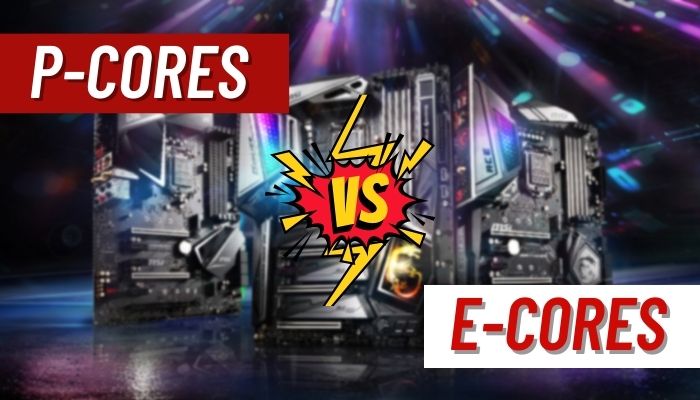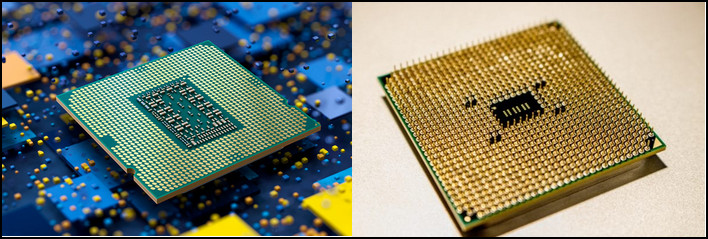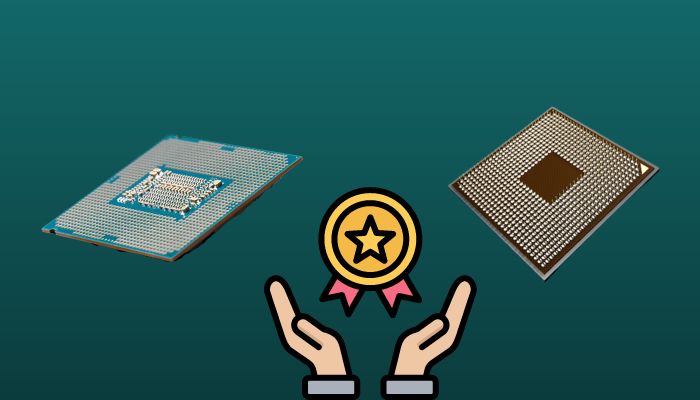Well, its not a new tech, but for x86 desktop CPUs, its a breakthrough.
Why Intel Came Up with Different Cores?
This punch in of hybrid core architecture isnt new because ARM-based mobile CPUs adopted it many years ago.

Until now, x86-based CPUs cores have the same clock speed and processing power.
When the CPU starts executing the instructions, all the cores begin the execution with the same clock speed.
As soon as, all the core starts to work at a time, the CPU draws more power.

But its not necessary for all the cores to execute simple tasks together.
Thats why ARM-based mobile CPUs included those performance cores and efficient cores a long time ago.
These cores help the CPU to be more power efficient.

Thats why hybrid cores are more optimized and draw less power from the battery while executing minimalistic tasks.
To achieve that super optimization, Intel adopted this CPU core technology.
However, Intel experimented with these cores in its Lakefield chips:Intel Core i5-L16G7&Intel Core i3-L13G4.

But the experiment was a mixed bag while delivering performance.
And they keep continuing that journey in their 13thgen Raptor Lake CPUs.
Thats whyGHz does matter in CPU, isnt it?
What are P-Cores & E-Cores?
Both P-cores & E-cores changed the game for Intel and bring back the position once snatched by AMD.
But what exactly are these P-Cores, and E-Cores?
Let me explain it.
Before we do, keep in mind thatCPU cores and logical processors/threads are not the same.
P-Cores
Lets start with the strong cores, the P-Cores.
P-Cores are the most powerful cores among these two sets of cores.
When the CPU needs to handle massive high-level tasks, the P-Core steps forward and takes the lead.
It pulls the most power and ramp with high clock speed.
So, they are called theperformance coreor P-core because they do most of the performance-based work.
These cores are capable of handling high CPU-intensive chores.
So, when Intel called for a high action it calls the big daddy, the P-Core.
And these cores crush and rip out all the workloads just like a heated knife slicing the butter.
P-core also offers hyper-threading, which means one core can handle the workload with two virtual cores.
So, P-cores are like beasts with two heavenly swords.
E-Cores
Now, lets get into the E-cores.
When P-cores does all the highly intensive work, E-cores handle the rest of the simple day-to-day task.
So, their work handling chart identifies them as the weaker cores.
Thats why they draw less power and become efficient cores or E-cores.
In fact, efficiency cores are mainly focused on less power consumption and provide the best performance as well.
As youre now well aware of the performance core & efficiency cores of Intels latest CPUs.
Now lets get into one step deeper; the advantages of this splitting technology.
Additionally, you could easilycheck how many P-Cores and E-Cores you have on your PC.
Intel is conquering the mountain of performance with these two sets of hybrid cores when working together.
Intel achieved a19%performance boost in the 12th gen with these cores against their 11th-generation Tiger Lake processors.
Plus, their 13th gen Raptor Lake gained a24%performance boost compared to the 12th generation.
However, the E-cores provide40%better performance than the older 6th gen Sky Lake CPUs.
Before adding those cores, AMD snatched Intels pride over performance with their Ryzen 5000 series APUs.
But Intel managed to bring back their pride by launching their 12th-generation processors in the market.
Intels 12th gen & 13th gen CPUs are truly magical wands because of those P-cores & E-cores.
To get the full benefit, Id strongly recommendenabling all cores on your PC.
Which Intel CPUs Do Come with Hybrid Cores?
Intel introduces the P-cores and E-cores into the 12thgen Alder Lake processors, which support theLGA1700socket.
And this core architecture also continued in the 13thgeneration Raptor Lake CPUs.
But not all the 12th & 13th generation processors have these hybrid cores.
I have also included the base & boost clock speed of those hybrid cores.
All the cores need exact voltage to run with the boosted clock speed.
And to overclock these beasts, you should know how much voltage a CPU can take.
So, apply the voltage carefully.
On a side note,disabling a few logical CPU corescan often give unexpected benefits as well.
FAQs
Are E-Cores worth it?
E-Cores are better to handle background or simple tasks.
These cores are less powerful but high-efficient.
But for gaming or CPU-intensive workloads, these cores wont do much.
What does P-Core & E-Core stand for?
For Intel processors, the P-Core stands for Performance core and E-Core stands for Efficient core.
Does Intel Core i7-12700K have P-Cores?
Intels 12th-gen core i7-12700K is equipped with 12 cores and 20 threads.
And these 12 Cores are combined with 8 P-Cores and 4 E-Cores.
So, when a CPU combined with performance and efficiency, its become tough to beat it.
Thats why AMD is planning to bring some major changes in the APUs architecture for their upcoming processors.
Lets see whats new is coming.
Till then, Intel will rule the CPU market for sure.
For more info, knock me in the comment box.
Good luck & keep enjoying the tech!